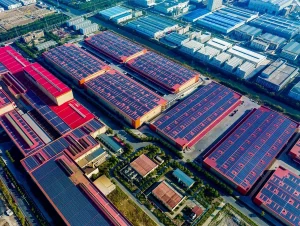
The accelerating electrification of key industrial sectors, such as energy generation and storage and transportation, requires advanced, innovative battery technologies with improved efficiency. This is necessary to mitigate the worst potential effects of anthropogenic climate change and improve the sustainability of human society in the 21st century and beyond. Over the past few years, a number of key advances have been made in battery technology, paving the way for a rapid reduction in greenhouse gas emissions. This article will look at recent innovations in sustainable battery technologies.
Introduction to Sustainable Batteries
Most devices are still powered by lithium-ion batteries. This decades-old technology is robust and efficient, suitable for use in everything from laptops and smartphones to electric vehicles (EVs.) However, while the technology has evolved over the past few decades, there is still room for improvement, particularly in terms of efficiency, cost, performance, and sustainability.
There are a number of concerns associated with battery sustainability, such as the supply of key battery materials like lithium and cobalt, battery lifetime, end-of-life disposal and recycling, and carbon emissions related to their manufacture.1 Current lithium-ion battery tech is environmentally and ethically problematic.2
Phasing out conventional lithium-ion batteries in favor of more sustainable alternatives will provide vast benefits for many industries. Lower cost, high-efficiency technologies constructed from materials with more availability and fewer carbon footprints can only be a benefit, helping to improve the commercialization of these devices.
Latest Developments in Battery Technology
While full commercialization of new devices entering the market is still some way off, some noteworthy advances have been made in the field of sustainable battery technology. Over the past few years, radical rethinks of the technology have been necessary to improve sustainability.
Solid-state batteries are one breakthrough that promises to improve the sustainability of energy storage. Rather than using a liquid electrolyte like in a conventional lithium-ion battery, solid-state devices use solid materials such as polymers and ceramics.
Solid-state batteries pack more energy into a smaller space, potentially allowing electric vehicles to possess more range before having to be recharged. Shorter charging times are also facilitated by faster charge movement. Furthermore, reduced flammability of solid electrolytes means that these devices are safer.1
Pittcon Highlights: Environment & Energy eBook
Pittcon Highlights: Environment & Energy Industry Focus eBook
Check out the highlights from Pittcon in the Environment & Energy industries
Download a free copy
As mentioned above, the battery industry is concerned about the scarcity of lithium. One potential alternative that has piqued researchers’ interest is the sodium-ion battery.
Sodium-ion batteries have a similar design to lithium-ion devices. While they offer little in the way of a performance boost, sodium is a far more abundant and cheaper element than lithium. However, concerns over whether they could meet the energy demands of sectors such as electric vehicles have led companies to initially target less demanding applications such as e-scooters.1
Lithium-sulfur batteries have also been a focus of research, as well as innovative iron-air batteries.1,3 Even completely metal-free platforms are being explored.2 Clearly, it can be seen that the field of sustainable battery research is producing some potentially game-changing technologies.
Commercial Perspectives
A number of companies are currently leading the way in the field of sustainable energy storage tech, helping to accelerate the development and commercialization of innovative alternatives to conventional lithium-ion batteries.
Iron-air battery technology that uses a water-based electrolyte is being developed by Form Energy. This sustainable device uses the principle of reversible rusting to store energy. The tech will be manufactured at the company’s new West Virginia facility.1
CATL, a Chinese battery giant, announced plans in 2023 to mass-produce sodium-ion batteries. QuantumScape announced in 2022 that they had shipped the first 24-layer prototype lithium-metal batteries to automotive manufacturers for testing, achieving a major milestone for the company.4
Research and Academic Contributions
There have been a number of academic contributions to the field over recent years. One key player in academia is the U.S. Department of Energy’s Argonne National Laboratory. Scientists there have been researching sulfur-based sustainable batteries, which are extremely cost-effective and can store more energy than conventional alternatives.
A recent study saw researchers produce a sulfur-based battery with a layer that adds storage capacity while overcoming corrosion issues due to polysulfides dissolving into the electrolyte, a traditional problem with this technology. The solution was to use a porous interlayer that contains sulfur, producing a device with three times higher initial capacity and high capacity retention over 700 cycles.3
Recent research published in the journal Nature demonstrated a completely metal-free battery platform that utilizes a polypeptide organic radical construction. This could help battery production move away from cobalt, a limited resource known to have environmental and ethical problems. Such a technology would negate the need to mine for these precious metals.
Another benefit of a metal-free battery configuration is easier recyclability. Polypeptide batteries are also biodegradable, non-toxic, and safer. Furthermore, they could find applications in cutting-edge wearable and implantable electronics.2
Challenges and Future Outlook of Batteries
The next few years will be crucial in this sector, with a number of technical and scalability challenges that must be addressed.
Battery recycling, which retrieves critical battery resources, such as lithium and nickel, is not as commonplace and developed as it should be. With the growing demand for sustainable battery technology, this is one area proving highly challenging.
The Inflation Reduction Act passed in 2022 includes billions of dollars in funding for battery and electric vehicle manufacturing in the US. One of the potential outcomes of this act is increased interest in recycling, according to the MIT Technology Review.1
Reducing the environmental impact of every industrial sector is absolutely crucial in the 21st century. As interest in the sector grows exponentially, fueled by research, commercial initiatives, and governmental funding, the future development of innovative sustainable battery technology will make it a dynamic field to watch.
Partner With Us
The Institute for Sustainability Africa (INŚAF) is an independent multi-disciplinary think tank and research institute founded in Zimbabwe in 2010 with the Vision to advance sustainability initiatives for Africa.




